Military
Over 40 Years Old, This Is the Most Widely Flown NATO Combat Aircraft

Published:

The strength of NATO’s air power lies in a select fleet of combat aircraft that are widely flown by its 30 member states. These aircraft play integral roles in upholding NATO’s air superiority and standing on the world stage. These jets, which include some of the most technologically sophisticated and operationally proven models, are central to NATO’s strategy of deterrence and rapid response. Here, 24/7 Wall St. is taking a closer look at the most widely used combat aircraft across all NATO countries.
To identify the most widely flown combat aircraft in NATO, 24/7 Wall St. reviewed the 2024 World Air Forces report from FlightGlobal, an aviation and aerospace industry publication. We ordered these aircraft by how many are currently in active service. We also included supplemental data on the type of aircraft and top speed. We excluded trainer aircraft.

Understanding the combat aircraft in NATO’s arsenal is important because they are at the heart of the alliance’s defensive capabilities and its influence on global security. Each aircraft serves a distinct purpose within NATO, ranging from air superiority fighters to long-range bombers, and even electronic warfare aircraft that disrupt enemy systems. Knowing which aircraft that NATO countries deploy gives insight into the overall military strategies of the alliance.
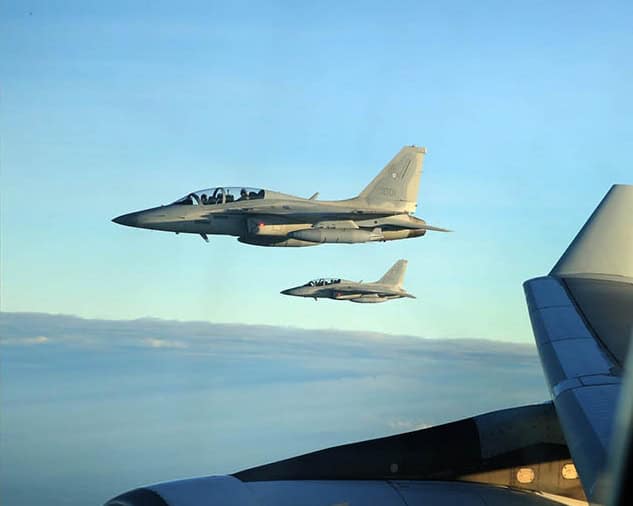
The KAI T-50/FA-50 Golden Eagle was designed and manufactured by Korea Aerospace Industries (KAI) in collaboration with Lockheed Martin. It was introduced in 2005 and can hit speeds around 1,000 mph. The Golden Eagle is an advanced trainer and light combat aircraft that has been developed into several variants to meet a range of needs like the T-50B aerobatic version, the TA-50 light attack variant, and the FA-50, which features fighter capabilities.

The Stinger II is a step up from the legacy AC-130 gunships, notably integrating advanced missile systems. Built by Lockheed Martin, this gunship only recently entered service in 2010. Armed with a 30mm Bushmaster II GAU-23/A gatling gun, along with Viper Strike, Griffin, and Hellfire missiles, The Stinger II is designed to deliver serious firepower in support of ground forces.
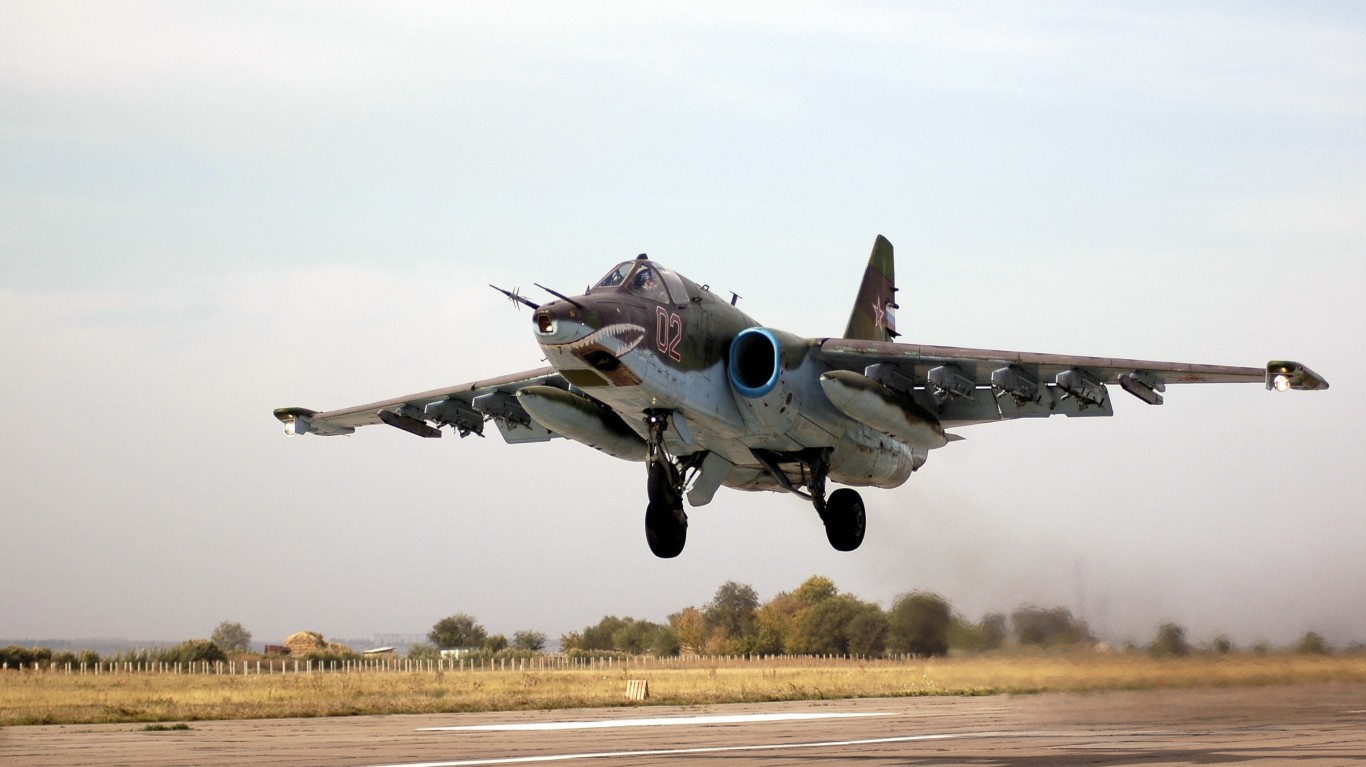
Recognized by the NATO reporting name “Frogfoot,” the Su-25 is a dedicated close-air support and ground attack aircraft. Although these jets have a relatively slow top speed of 590 mph, they can equip a wide array of armament including a 30mm GSh internal cannon, rocket pods, guided munitions, conventional bombs, air-to-surface missiles, and air-to-air missiles. There are currently 176 of these aircraft in active service.
The MiG-21 Fishbed is one of the most widely produced fighter aircraft in aviation history. Originally developed by Mikoyan-Gurevich during the 1950s, this jet has gone on to see service across the globe as a fighter and interceptor aircraft.

The Aero L-159 ALCA (Advanced Light Combat Aircraft) is a Czech-built attack jet, primarily designed for light combat and reconnaissance missions. It was developed by Aero Vodochody and intended to bridge the gap between advanced jet trainers and heavier combat aircraft.

Introduced in 1997, the B-2 Spirit is a strategic stealth heavy bomber with a top speed of 628 mph. It is designed to deliver a wide range of ordnance including nuclear bombs. Although there are only 17 of these aircraft in active service (all in the U.S. Air Force), they can punch far above their class in terms of what they can deliver in payload.

The AMX is a ground attack aircraft designed for battlefield interdiction, close air support, and reconnaissance missions. This jet came from a collaboration between Italy and Brazil through the AMX International consortium and it was introduced to service in 1989.
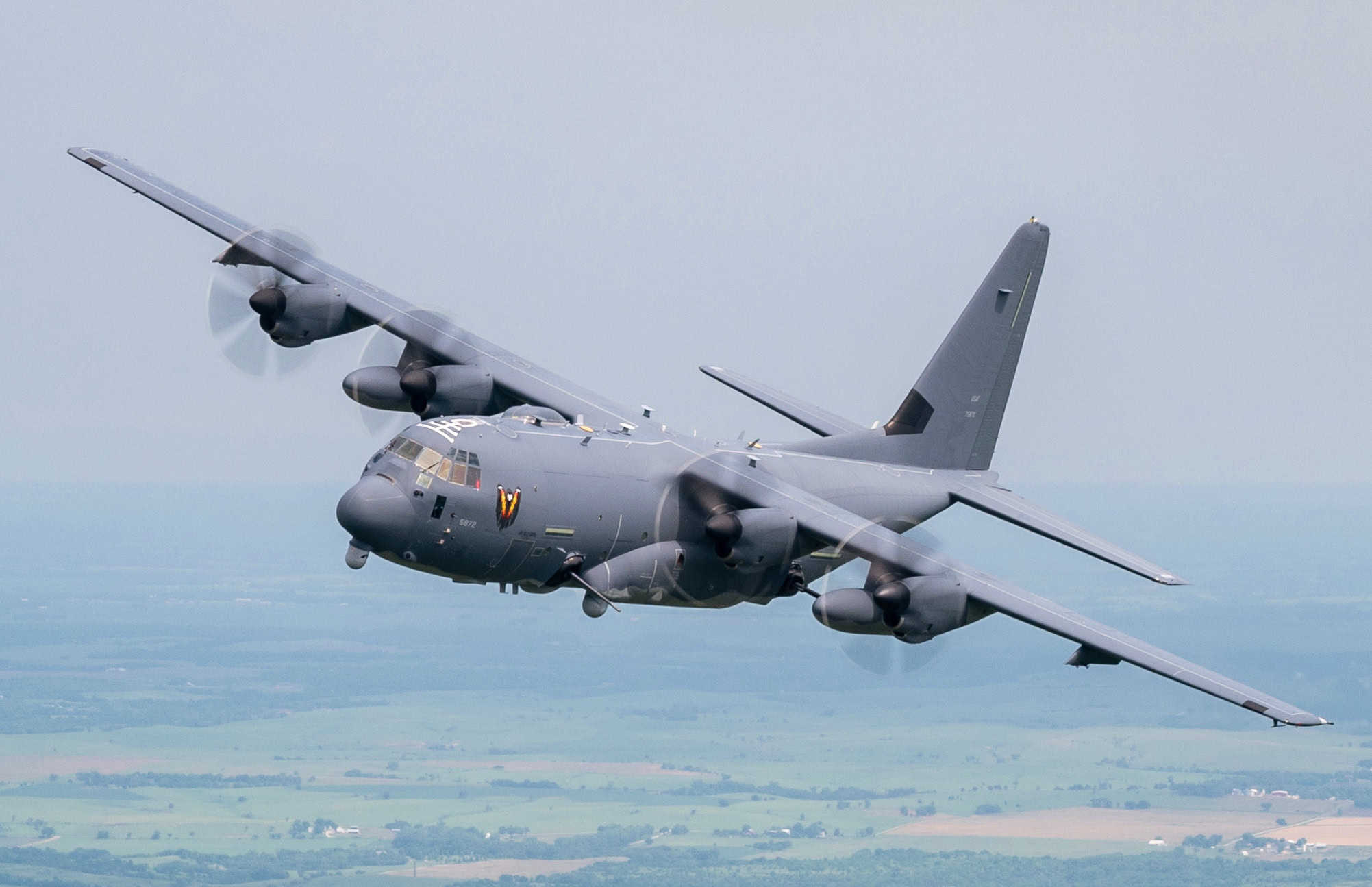
The Ghostrider is the latest in the AC-130 gunship series. Although these gunships do not carry nukes, they can equip practically any other ordnance, even a gun meant for ground artillery. The Ghostrider is easily one of the most heavily armed aircraft in the U.S. Air Force.
Most notably in Ghostrider’s arsenal is its 105mm howitzer, which is typically seen on ground artillery platforms. This big gun delivers serious firepower with pinpoint accuracy from far above the battlefield, giving it an incredible tactical advantage.
Outside of the 105mm howitzer, Ghostrider can equip a variety of missiles like Hellfires or Griffins, precision-guided bombs, or even just the basic conventional drop bombs.
The Su-22 Fitter is a tactical bomber and ground attack aircraft developed by the Soviet Union and a derivative of the Su-17 series. It was introduced in 1970 and has become a staple of many air forces across Eastern Europe, the Middle East, and Africa during the Cold War era and continues to serve in several militaries to this day.
Even though the MiG-29/35 Fulcrum makes up the backbone of Russia’s fleet of fighter jets, there are still a handful of these aircraft in NATO air forces. Introduced in 1984, these jets can hit speeds up to 1,519 mph. They come equipped with a 30mm GSh-1 internal automatic cannon standard, as well as Alamo and Adder missiles, rocket pods, and both conventional and guided bombs. The MiG-35 variant includes advanced avionics, improved radar systems, and can perform multi-role missions like ground strikes and interception.
Introduced in 1986, the B-1B Lancer is a strategic heavy bomber that is capable of reaching speeds up to 833 mph, which makes it one of the fastest bombers in the U.S. Air Force. It carries a wide range of armaments, including joint direct attack munitions, general-purpose bombs, JASSM missiles, and even freefall nuclear bombs.

The B-52 is one of the longest serving aircraft in the U.S. Air Force, introduced in 1955. It was originally developed in the post-World War II years to succeed the B-29 Superfortress, which dropped the bomb on Japan. The B-52s were designed to carry larger payloads than the B-29, including nuclear weapons. The Stratofortress acted as a strong nuclear deterrent throughout the Cold War as well.
The F-4 Phantom II played an important role during the Vietnam War, where it was used extensively for ground-attack missions and air superiority roles, making it one of the most important military aircraft of the 20th century. It was introduced to service in 1960. In its time, the F-4 has set numerous speed and altitude records, and was notable for its ability to carry large payloads.

The JAS 39 Gripen is a multirole fighter aircraft developed by the Swedish aerospace company Saab. It was introduced in 1997 and can hit speeds up to nearly 1,400 mph. The Gripen is designed to fulfill a variety of roles, including air defense, ground attack, and reconnaissance, within a single airframe.
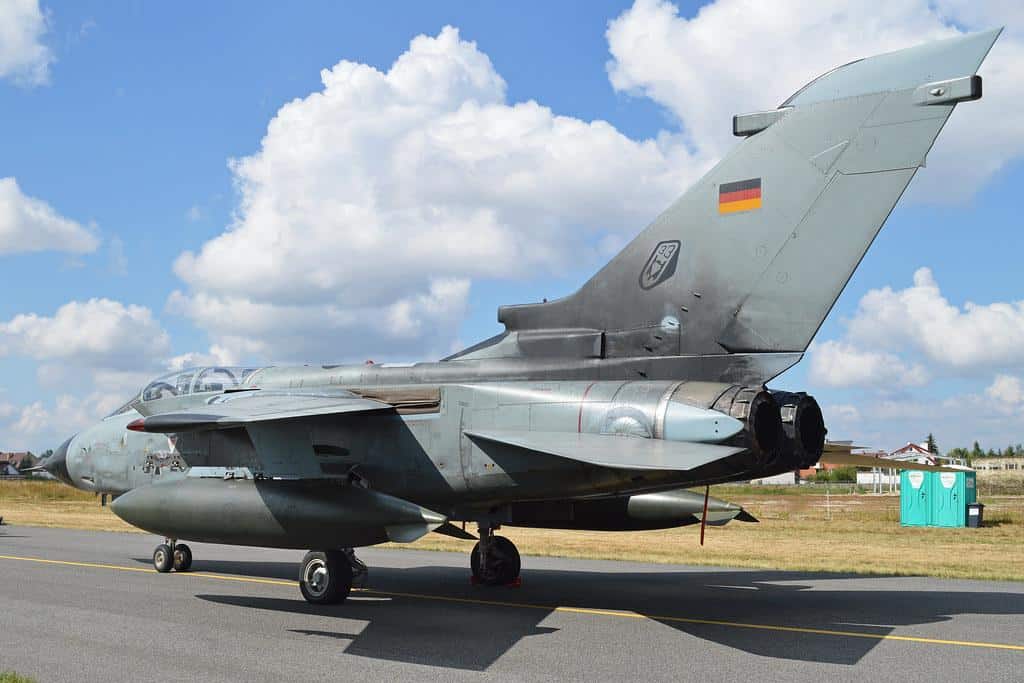
The Panavia Tornado IDS (Interdictor/Strike) is a multirole combat aircraft developed and manufactured jointly by Italy, the United Kingdom, and Germany. It was introduced in the late 1970s and can hit speeds around 1,500 mph. The Tornado excels in low-altitude penetration at high speeds, making it particularly effective for ground attack missions in heavily defended enemy areas. These aircraft also come with the firepower to back up this speed.

The AV-8B Harrier II is an iconic example of vertical/short takeoff and landing (V/STOL) aircraft. It is primarily used by the United States Marine Corps. Developed by McDonnell Douglas and BAE Systems, the Harrier II stands out for its ability to operate from carriers, forward bases, and even makeshift forward operating bases.
The Mirage 2000-5F is one of the mainstays of NATO combat aircraft. These fighter jets were introduced in 1979, developed by Dassault Aviation. With a top speed of 1,453 mph (just under Mach 2), it is one of the fastest jets in France’s arsenal, making it ideal for both interception and strike roles.
These jets come armed with a 30mm DEFA internal automatic cannon standard, along with Magic 2 missiles, laser-guided bombs, and even Exocet anti-ship missiles. The Mirage 2000-5F can also carry nuclear stand-off missiles which are a key component of France’s nuclear deterrence strategy.
The Mirage 2000-5F has been deployed in various international missions, including NATO operations in Kosovo and Libya.
The Dassault Rafale is the main asset of the French Air and Space Force, and it has found its way into many other NATO air forces. This jet was introduced in 2001 and has found its way into a few other air forces across Europe. With a top speed of 1,383 mph (Mach 1.8), the Rafale is ideal for strike operations as well as air superiority missions. Its advanced armament includes a 30mm GIAT 30/M791 internal automatic cannon, MICA and Meteor missiles, Exocet anti-ship missiles, laser-guided bombs, and nuclear stand-off missiles.
The Rafale also plays a key role in France’s nuclear deterrence strategy as it is capable of launching nuclear stand-off missiles. Also, the advanced targeting system on these jets can engage up to 40 targets, which allows for greater situational awareness for the pilot.
The Rafale is capable of operating from both land-based airstrips and aircraft carriers, offering a lot of flexibility for NATO in various scenarios.

The F-22 Raptor is one of the elite fifth-generation aircraft, introduced in 2005. It features some of the newest stealth technology and can hit speeds around Mach 2. It comes equipped with a 20mm automatic cannon standard and can be outfitted with Sidewinder and AMRAAM missiles, as well as joint drop munitions and air-launched cruise missiles.
In addition to its impressive speed and firepower, the F-22 Raptor is known for its unmatched agility and advanced avionics, making it a dominant force in both air superiority and strike missions.
One interesting fact about this aircraft is that the Raptor’s supercruise ability enables it to sustain high-speed flight without the need for afterburners. This sets it apart from most other fighters, which typically require afterburners to exceed the speed of sound. The F-22 Raptor can sustain speeds of Mach 1.5 to Mach 2 in supercruise mode.
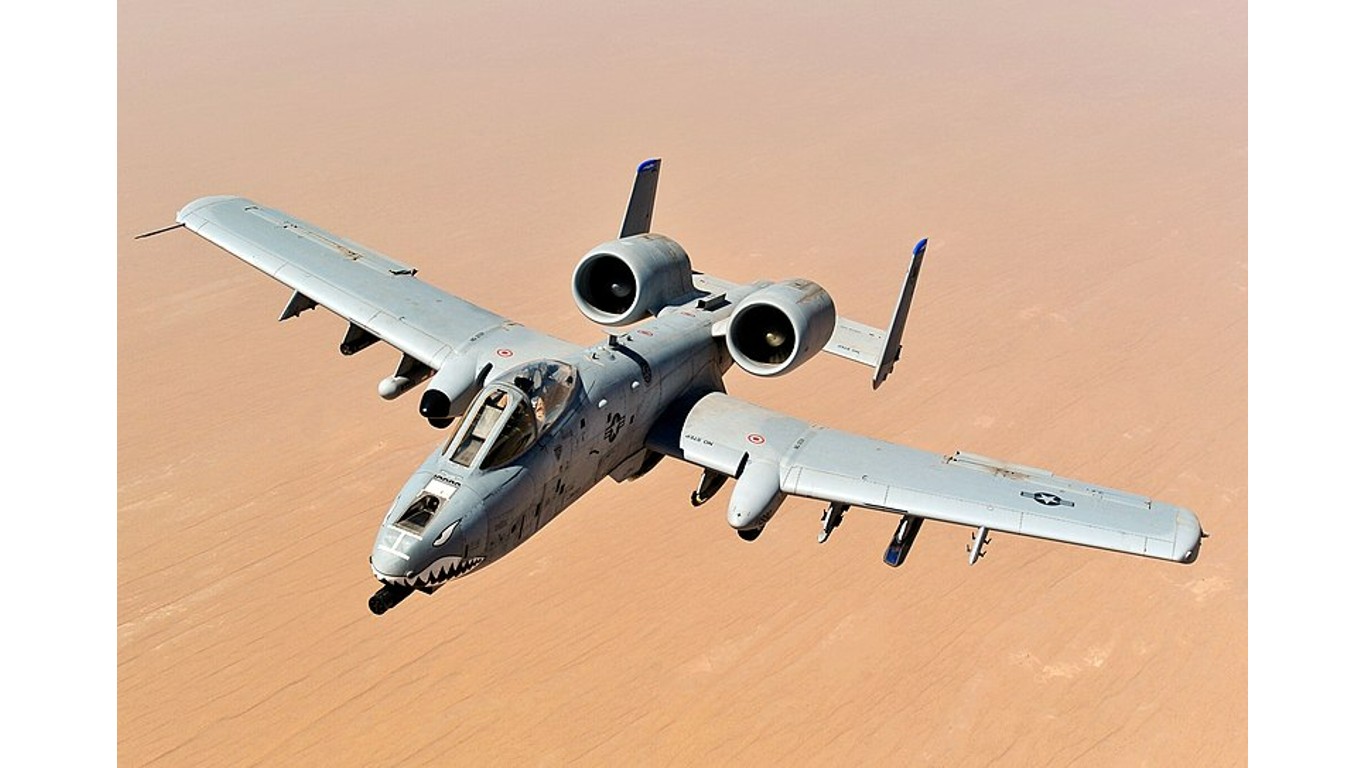
Introduced in 1976, the A-10C Thunderbolt II is a specialized close-air support and forward air control aircraft. It is armed with a 30mm GAU-8/A gatling gun, which can fire up to 3,900 rounds per minute, along with a variety of missiles and bombs, including Mavericks and Sidewinders. Built by Fairchild Republic, the A-10 is known for its toughness, earning its nickname as the “Warthog”. One aspect about the A-10 is its “titanium bathtub” cockpit, which provides the pilot with protection from ground fire.

Developed originally by McDonnell Douglas, and later by Boeing, the F/A-18 Hornet is a versatile multirole aircraft. It serves as a fighter and attack aircraft, capable of operating from aircraft carriers and land bases. The Hornet was introduced in 1983 and can hit speeds of roughly 1,200 mph. It has seen extensive service across numerous conflicts, proving its combat effectiveness and adaptability in various situations. The F/A-18 (and the upgraded Super Hornet) continues to be a backbone for U.S. and allied forces around the world.

Developed by McDonnell Douglas (now Boeing) in the 1970s, the F-15 Eagle and Strike Eagle variant stand as some of the most iconic and successful fighter jets in the world. With a top speed over Mach 2, the F-15 can outrun almost anything in the sky. Its twin-engine design provides serious thrust, allowing some variants to carry over 16,000 pounds of ordnance, including air-to-air missiles and bombs.
One thing that stands out with this jet is its combat record. Since its introduction, the F-15 has claimed more than 100 air-to-air victories without a single loss in combat.
The F-15 has been used in several conflicts, including Operation Desert Storm, where it proved its air superiority by downing numerous Iraqi aircraft. The Strike Eagle has seen extensive combat as well, especially in ground-attack operations in Iraq, Afghanistan, and Syria.
The Eurofighter Typhoon is a 4th generation multirole combat aircraft, which entered service in 2003. Capable of achieving speeds up to 1,550 mph, the Typhoon can equip a number of weapons including a 27mm Mauser BK-27 internal cannon standard, as well as various missiles like Sidewinder, IRIS-T, and Meteor, as well as Storm Shadow and Taurus stand-off missiles. It can also deploy both laser-guided and conventional bombs.
The F/A-18 Super Hornet was introduced in 1999 as a carrier-based strike fighter aircraft. There are currently over 400 of these aircraft in service of the U.S. Navy.
These jets are capable of reaching speeds up to 1,187 mph and are typically armed with a 20mm M61A1 Vulcan cannon and a variety of missiles and bombs, including Sidewinders, AMRAAMs, Harpoons, HARMs, Mavericks, as well as precision joint direct attack munitions and conventional bombs.
The Super Hornet is designed with a larger airframe, more advanced radar systems, and greater fuel capacity than its predecessor, the original F/A-18 Hornet. These upgrades significantly improve the Super Hornet’s range and endurance.

Introduced in 2016, the F-35A Lightning II boasts a top speed of 1,199 mph and can equip a wide variety of weapons. It is one of the newest fifth-generation aircraft to enter service. Currently, there are 488 in active service across NATO members (roughly half are in service of the U.S. military) but hundreds more are on order from Lockheed Martin for many NATO member states.
Originally introduced in 1978 to the U.S. Air Force, the Fighting Falcon is a multirole fourth generation fighter jet. Over the years this jet has undergone upgrades and improvements, but it is still relatively cheap compared to the newest generation of fighter jets.
It has become popular with many militaries around the world, and many are looking to procure these jets. Early variants of the F-16 sell for roughly $13 million with more recent variants starting between $25 and $30 million. However, the most advanced versions of this aircraft can cost anywhere upwards of $60 million.
The F-16 comes standard with a 20mm internal automatic cannon and can be equipped with a range of air-to-air missiles and air-to-ground missiles. It can reach speeds of roughly 1,300 mph and has an operational range of 2,600 miles. The Fighting Falcon fills a variety of roles for any air force but it is primarily used for interception and general strike missions.
Retirement can be daunting, but it doesn’t need to be.
Imagine having an expert in your corner to help you with your financial goals. Someone to help you determine if you’re ahead, behind, or right on track. With SmartAsset, that’s not just a dream—it’s reality. This free tool connects you with pre-screened financial advisors who work in your best interests. It’s quick, it’s easy, so take the leap today and start planning smarter!
Don’t waste another minute; get started right here and help your retirement dreams become a retirement reality.
Thank you for reading! Have some feedback for us?
Contact the 24/7 Wall St. editorial team.